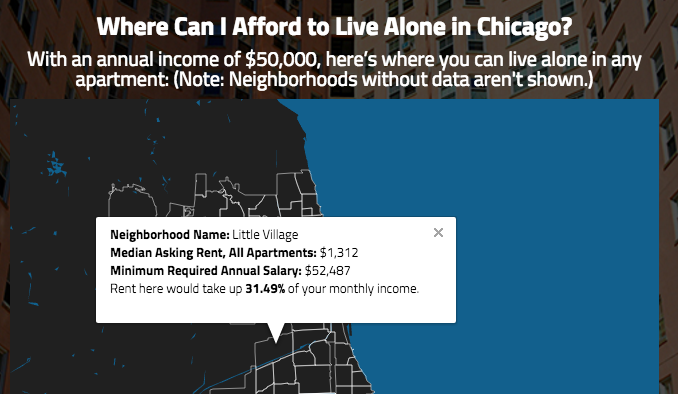While gentrification in Pilsen and Humboldt Park has long drawn the ire of Latin@ activists, gentrification in Chicago’s beloved Mexican barrio, Little Village, has yielded little protest.
This week Northwestern University’s Medill Reports Chicago featured a story on Little Village’s changing population and rising rents and home values:
According to real estate data from Zillow, home values are increasing in Little Village faster than in Chicago as a whole. The median price of homes sold in the neighborhood has increased 7.6 percent since January of last year, up to $128,000, which is moving at a 1 percent faster rate than home prices in Chicago overall.
One prime example is 2100 S Marshall Boulevard. In 2014, it emerged from a complete renovation as 2100 Marshall Lofts, where the starting monthly rent for a one-bedroom apartment is $1,300. That’s the median price for apartments in Little Village. The building is owned by Marshall Boulevard Partners LLC, who defaulted on an $8.4M loan on the building in 2008. The loan was cited in an ongoing $73M FDIC lawsuit alleging former executives of the now defunct-SouthShore Bank did not follow “prudent lending practices.”

The latest location to join the fray is one of the most recognizable buildings in Little Village–2200 S Marshall Boulevard, once home to Latino Youth Alternative High School. The real estate listing pitched the yellow four-story building on Cermak and Marshall as a “great investment opportunity.” This past October, it sold for $1.4M to S87, a limited liability company of long-time Chicago real estate broker Paul Tsakiris, who owns several properties throughout Illinois, some of which are in foreclosure.
The ground floor where altruistic teachers and renowned author Sandra Cisneros once invested in the future of high school dropouts may be turned into a high-end cafe–in a neighborhood where still only 24% of students have a high school diploma and one-third of residents live below the poverty line.
Unlike its pricey neighbor one block north, an unremarkable “updated” 3-bedroom apartment at 2200 S. Marshall runs $800/month. The rental ad, however, is bound to raise eyebrows with descriptions such as:
• “windows are barred for peace of mind”
• “A cafe will be opening on the ground floor in spring”
• “If you’re a biker like me, you can get to the middle of Wicker Park in 25 minutes”
• “The location is ideal if you go to UIC or work in the West Loop.”
Little Village resident David Morales has noticed the increasing diversity in the neighborhood, emphasizing “Don’t get me wrong, I’m all for diversity, but just like with Pilsen it’s gonna drive out a lot of long-time residents. I’m glad my family owns our house but not a lot of people have that privilege.”
Another point of concern in Little Village is how a proposed green walkway, called Little Village Paseo, may turn a community-driven project into another instance of environmental gentrification, similar to the 606 Trail. As Luis Gutierrez of Latinos Progresando told the RedEye: “How are we going to ensure this passageway, as beautiful as it’s going to be, will be enjoyed by the people who live here and not used to displace people?”
Thank you to Brian Martin, Jenny Patiño, and a Little Village artist for their contributions to this article.